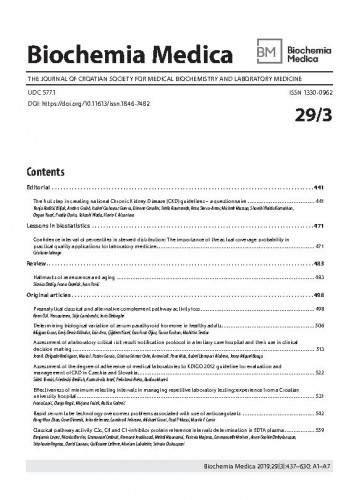The complex process of biological aging, as an intrinsic feature of living beings, is the result of genetic and, to a greater extent, environmental factors and time. For many of the changes taking place in the body during aging, three factors are important: inflammation, immune aging and senescence (cellular aging, biological aging). Senescence is an irreversible form of long-term cell-cycle arrest, caused by excessive intracellular or extracellular stress or damage. The purpose of this cell-cycles arrest is to limit the proliferation of damaged cells, to eliminate accumulated harmful factors and to disable potential malignant cell transformation. As the biological age does not have to be in accordance with the chronological age, it is important to find specific hallmarks and biomarkers that could objectively determine the rate of age of a person. These biomarkers might be a valuable measure of physiological, i.e. biological age. Biomarkers should meet several criteria. For example, they have to predict the rate of aging, monitor a basic processthat underlies the aging process, be able to be tested repeatedly without harming the person. In addition, biomarkers have to be indicators of biological processes, pathogenic processes or pharmacological responses to therapeutic intervention. It is considered that the telomere length is the weak biomarker (with poor predictive accuracy), and there is currently no reliable biomarker that meets all the necessary criteria.
Sažetak

 Biochemia medica : the journal of Croatian Society for Medical Biochemistry and Laboratory Medicine : 29,3(2019) / glavna i odgovorna urednica Daria Pašalić.
Biochemia medica : the journal of Croatian Society for Medical Biochemistry and Laboratory Medicine : 29,3(2019) / glavna i odgovorna urednica Daria Pašalić.